
A candle is an ignitable wick embedded in wax, or another flammable solid substance such as tallow, that provides light, and in some cases, a fragrance.
Candles were among the earliest inventions of the ancient world, as shown by candlesticks from Egypt and Crete dating to at least 3000 BC.
Candles have also been used for religious purposes. The Bible, for instance, makes numerous references to the use of candles, including the story of King Solomon who, after building the Temple, used ten candle-sticks to light the north and south ends of the structure.
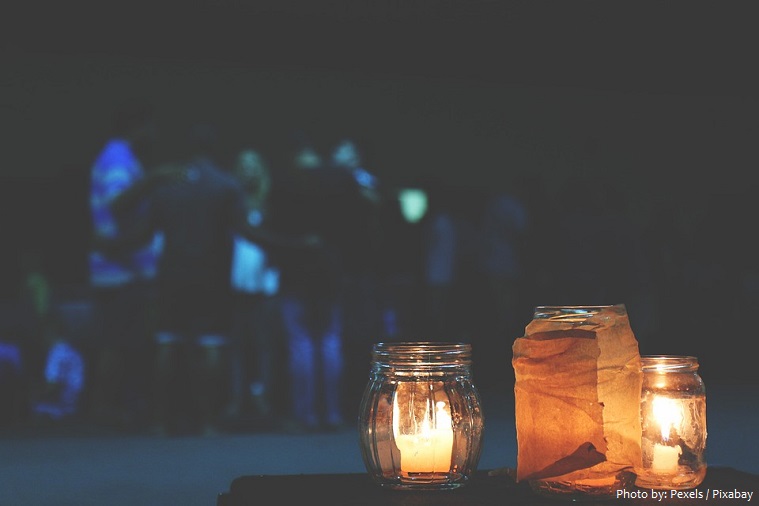
It is also known that candles played an important role in early religious ceremonies. Hanukkah, the Jewish Festival of Lights which centers on the lighting of candles, dates back to 165 BC. There are several Biblical references to candles, and the Emperor Constantine is reported to have called for the use of candles during an Easter service in the 4th century.
Romans began making dipped candles from tallow, beginning around 500 BC.
There is a fish called the eulachon or “candlefish”, a type of smelt which is found from Oregon to Alaska. During the 1st century AD, indigenous people from this region used oil from this fish for illumination. A simple candle could be made by putting the dried fish on a forked stick and then lighting it.
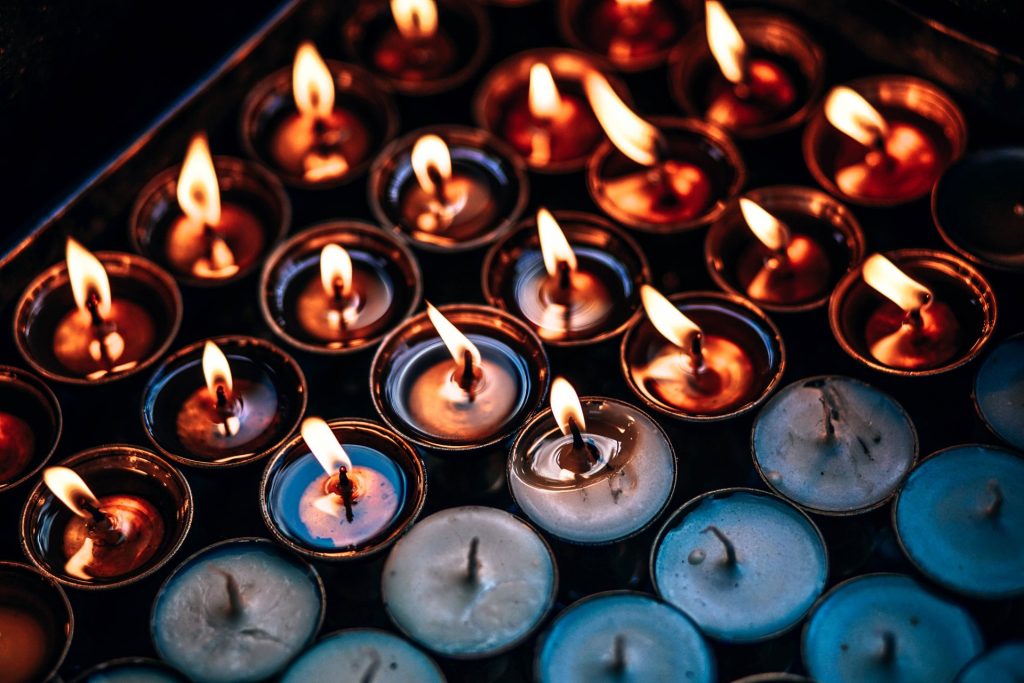
By the European Middle Ages tallow candles were in wide use: in a Paris tax list of 1292, 71 chandlers, or candlemakers, are named.
By the 18th century, candle clocks were being made with weights set into the sides of the candle. As the candle melted, the weights fell off and made a noise as they fell into a bowl.
In the 18th and 19th centuries, spermaceti, a waxy substance produced by the sperm whale, was used to produce a superior candle that burned longer, brighter and gave off no offensive smell.
In the 19th century a French chemist, Michel-Eugène Chevreul, separated the fatty acid from the glycerin of fat to produce stearic acid, from which superior candles could be made. New processes for producing candle stock appeared in rapid succession.
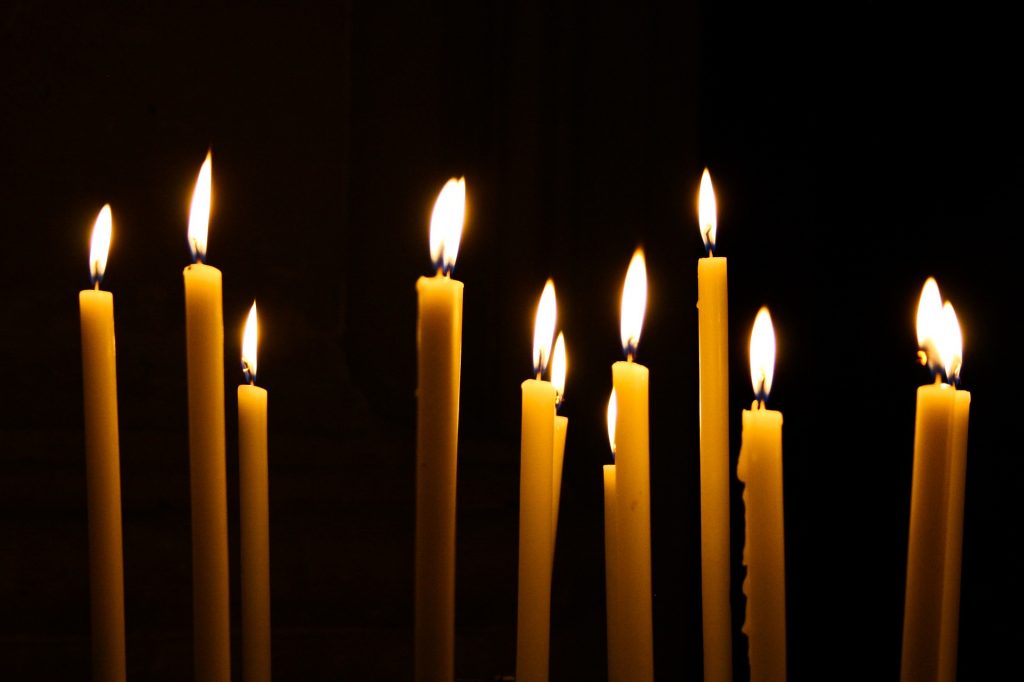
The manufacture of candles became an industrialized mass market in the mid 19th century. In 1834, Joseph Morgan, a pewterer from Manchester, England, patented a machine that revolutionised candle making. It allowed for continuous production of molded candles by using a cylinder with a moveable piston to eject candles as they solidified. This more efficient mechanized production produced about 1,500 candles per hour.
The Standard, or International, Candle is a measurement of light source intensity. It was originally defined as a one-sixth-pound candle of sperm wax, burning at the rate of 120 grains per hour. This intensity of light was standardized in 1921 in terms of incandescent lamps, and candles are no longer used for reference.
Modern candles are produced in a wide variety of colours, shapes, and sizes. Beeswax and bayberry wax are occasionally employed as additives, and some candles are scented. Candlemaking has become a popular hobby.
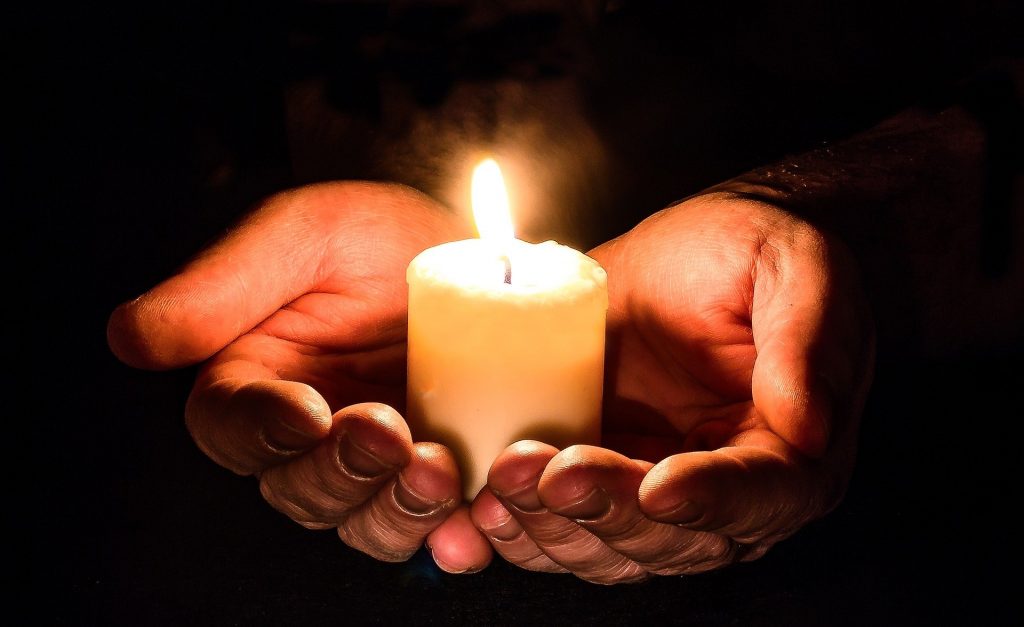
In America, Syracuse, New York developed into a global center for candle manufacturing from the mid-nineteenth century. Manufacturers included Will & Baumer, Mack Miller, Muench Kruezer, and Cathedral Candle Company.
Despite advances in candle making, the candle industry declined rapidly upon the introduction of superior methods of lighting, including kerosene and lamps and the 1879 invention of the incandescent light bulb and in the 2000s with faux candles and lanterns using LEDs.
From this point on, candles came to be marketed as more of a decorative item. Candles became available in a broad array of sizes, shapes and colors, and consumer interest in scented candles began to grow. During the 1990s, new types of candle waxes were being developed due to an unusually high demand for candles. Paraffin, a by-product of oil, was quickly replaced by new waxes and wax blends due to rising costs.
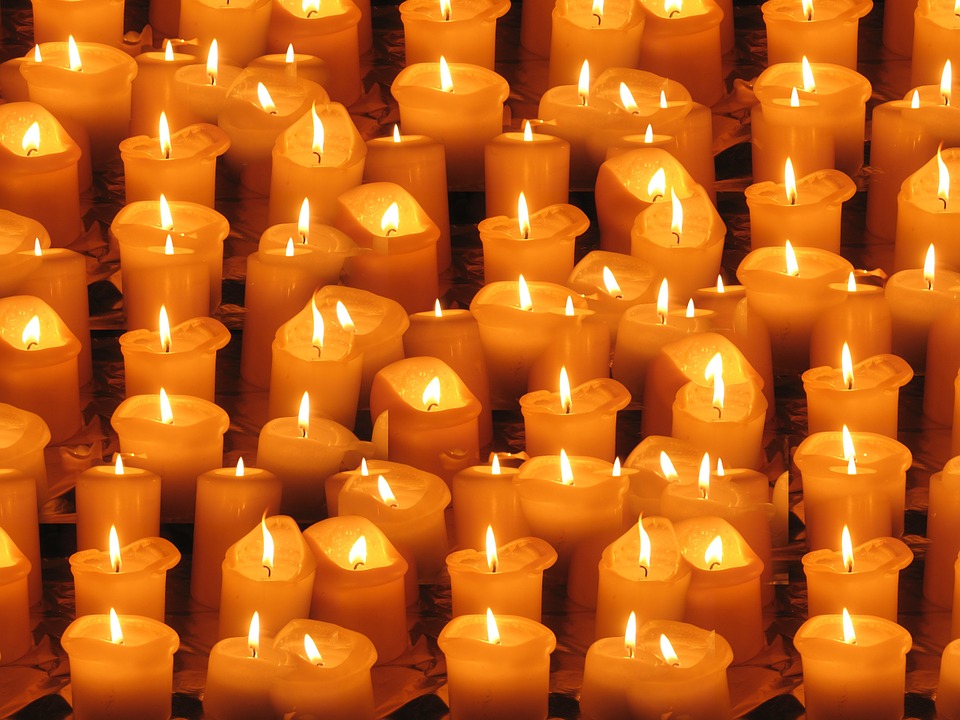
The word “candle” comes from Middle English candel, from Old English and from Anglo-Norman candele, both from Latin candēla, from candēre, to shine.
The birthday cake is often decorated with small candles, secured with special holders or simply pressed down into the cake. According to some sources putting candles on cake was a Greek innovation. In Ancient Greece, worshippers brought moon-shaped cakes to the temple of Artemis, the goddess of the moon and the hunt. The cakes were decorated with lit candles in order to make them glow like the moon. According to other sources the tradition of adding candles to the top of a birthday cake comes from Germany. In 18th century Germany, the history of candles on cakes can be traced back to Kinderfest, a birthday celebration for children.
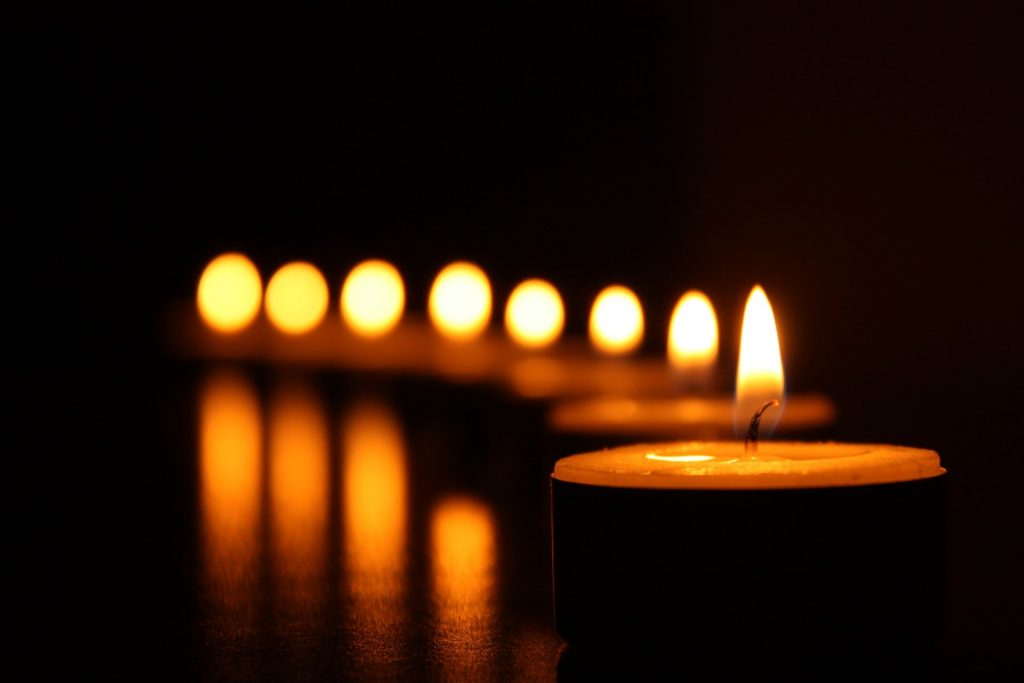
In the days leading to Christmas, some people burn a candle a set amount to represent each day, as marked on the candle. The type of candle used in this way is called the Advent candle, although this term is also used to refer to a candle that decorates an Advent wreath.
The first American colonists discovered that bayberries could be used to make candles, but the yield was very poor. Fifteen pounds of boiled bayberries would provide only one pound of wax.
The oldest candle manufacturers still in existence are Rathbornes Candles, founded in Dublin in 1488.
A candle 24.38 meters (80 ft) high and 2.59 meters (8ft 6in) in diameter, was exhibited at the 1897 Stockholm Exhibition by the firm of Lindahls. The overall height including its brick base was 38.7 meters (127 ft).
The most candles lit simultaneously at a single venue is 12,135 and was achieved by Art of Living Foundation (India) in Ahmedabad, India, on 13 November 2012.
